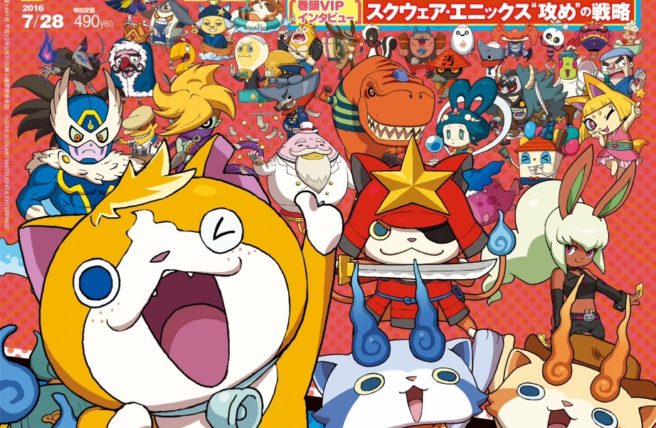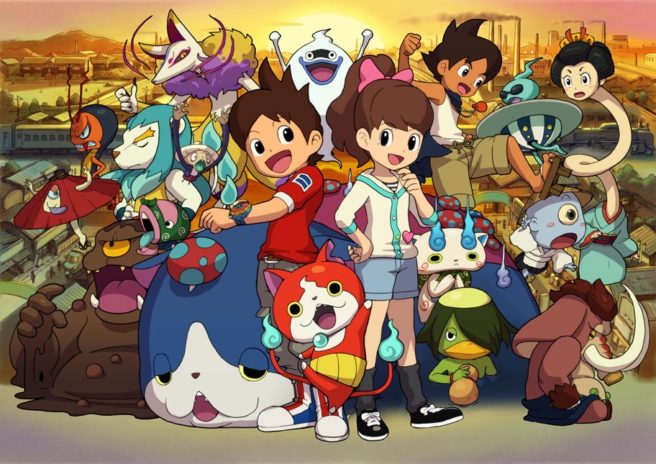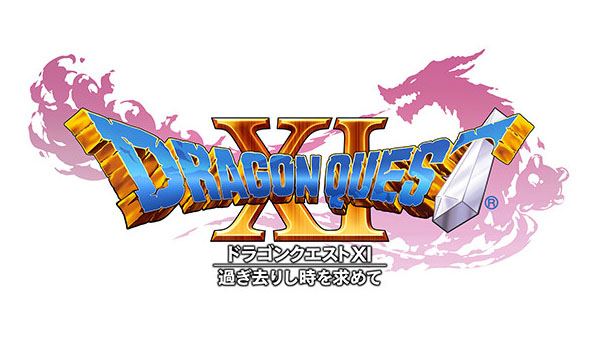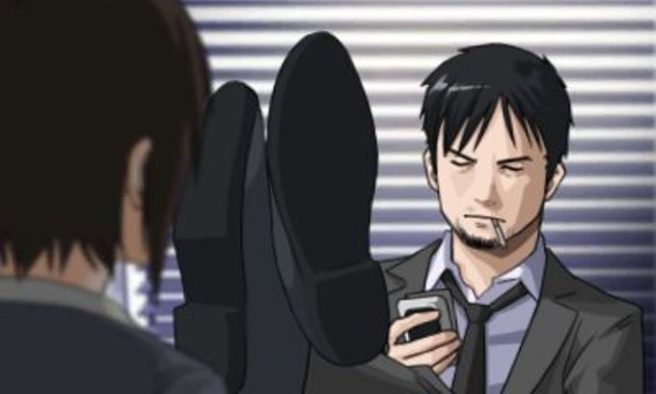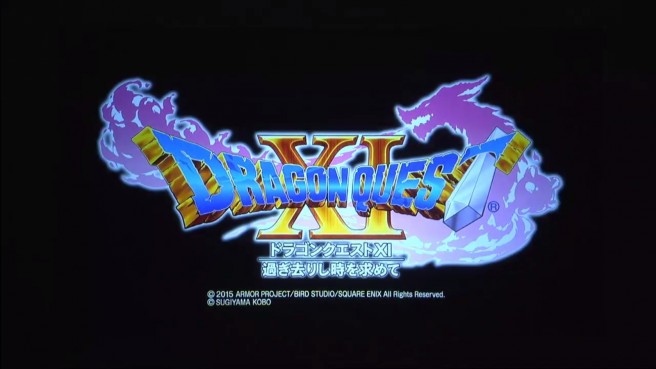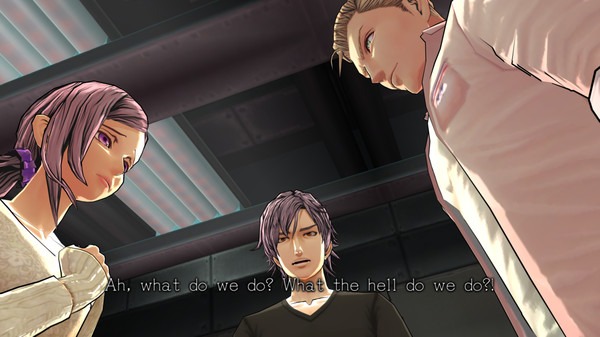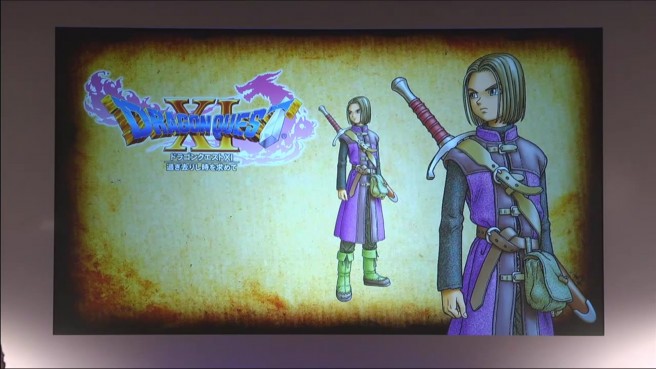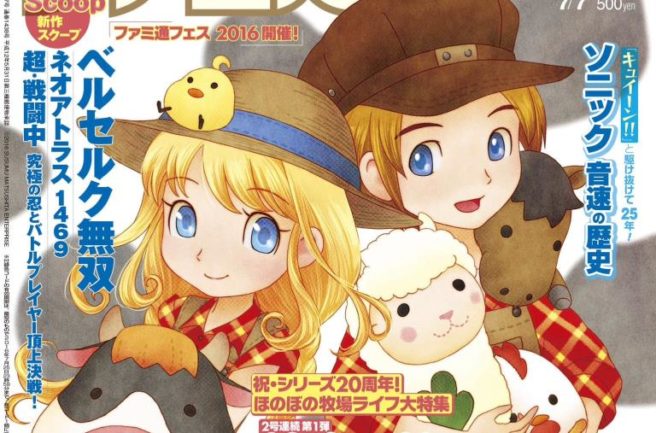Scans roundup – Yo-kai Watch 3, Metroid Prime: FF, Etrian Odyssey V, more
Posted on 9 years ago by Brian(@NE_Brian) in 3DS, Images | 0 comments
This week’s Famitsu scans are now available. Highlighted games include Yo-kai Watch 3, Metroid Prime: Federation Force, Etrian Odyssey V, Puzzle & Dragons X, Pokemon Sun/Moon, One Piece: Great Pirate Colosseum, Digimon Universe: Appli Monsters, Dragon Ball: Fusions, and Chou Sentouchuu: Kyuukyoku no Shinobu to Battle Player Choujou Kessen. Scans of each can be found in the gallery below.
Famitsu review scores (7/13/16)
Posted on 9 years ago by Jake in 3DS, Wii U | 4 Comments
This week’s Famitsu review scores are in and are as follows:
7’scarlet (PS Vita) – 8/8/8/8
Battle of Elemental REBOOST (3DS) – 6/7/6/6
Block Drop U (Wii U) – 6/6/6/6
Gendai Daisenryaku 2016: Chitsujo no Houkai – Haken Kokka Shittsui (PS3) – 7/6/6/6
Gendai Daisenryaku 2016: Chitsujo no Houkai – Haken Kokka Shittsui (PS Vita) –
7/6/6/6
Sumikko Gurashi: Mura o Tsukurundesu (3DS) – 7/8/8/7
Yo-kai Watch 3: Sushi / Tempura (3DS) – 10/9/9/9
Ys VIII: Lacrimosa of Dana (PS Vita) – 9/8/8/9
More: Famitsu
Famitsu’s most wanted games (7/10/16)
Posted on 9 years ago by Brian(@NE_Brian) in 3DS, News, Wii U | 3 Comments
It’s time for the latest Famitsu‘s most wanted games chart! Dragon Quest XI is still in the top five while Zelda: Breath of the Wild is now back in the top 10.
Head past the break for the full chart. All votes were cast between June 23 and June 29.
More: Famitsu, Famitsu's most wanted
Chase: Cold Case Investigations gets first review in Famitsu
Posted on 9 years ago by Brian(@NE_Brian) in 3DS eShop, News | 0 comments
Last week, Aksys announced localization of Chase: Cold Case Investigations. It’s a new game from Hotel Dusk director Taisuke Kanasaki plus former CING staff.
Although Famitsu’s review was published a few weeks back, we thought we’d take a new look at it now that Chase’s localization is confirmed. Editors dished out scores of “8”, “7”, “8”, and “6” for a score of 29 out of 40.
Wondering why Chase received those scores? Head past the break for the full transcript of Famitsu’s review.
Famitsu’s most wanted games (7/3/16)
Posted on 9 years ago by Brian(@NE_Brian) in 3DS, News, Wii U | 7 Comments
It’s time for the latest Famitsu‘s most wanted games chart! The top few spots are mostly the same, but Zelda is back up a couple of spots.
Head past the break for the full chart. All votes were cast between June 16 and June 22.
More: Famitsu, Famitsu's most wanted
Japan’s best-selling games of May 2016
Posted on 9 years ago by Brian(@NE_Brian) in 3DS, News, Wii U | 2 Comments
The latest issue of Famitsu has shared a listing of the top 30 best-selling games in Japan for the month of May 2016. You can check out the full results below.
Scans roundup – Aikatsu Stars! My Special Appeal, Zero Time Dilemma, more
Posted on 9 years ago by Brian(@NE_Brian) in 3DS, Images | 0 comments
This week’s Famitsu scans are now available. Highlighted games include Aikatsu Stars! My Special Appeal, Culdcept Revolt, Pokemon, Puzzle & Dragons X, and Zero Time Dilemma. Scans of each can be found in the gallery below.
Famitsu review scores (6/28/16)
Posted on 9 years ago by Brian(@NE_Brian) in 3DS, 3DS eShop, News | 2 Comments
This week’s Famitsu review scores are as follows:
Culdcept Revolt (3DS) – 8/8/8/9
Shin Hayarigami 2 (PS4/PS3/PSV) – 8/8/8/8
Ambition of the Slimes (3DS) – 8/8/7/7
Pac-Man 256 (PS4) – 7/8/7/7
More: Famitsu, Famitsu scores
Famitsu’s most wanted games (6/26/16)
Posted on 9 years ago by Brian(@NE_Brian) in 3DS, News, Wii U | 9 Comments
It’s time for the latest Famitsu‘s most wanted games chart! There are some dips here and there, but things are mostly the same.
Head past the break for the full chart. All votes were cast between June 9 and June 15.
More: Famitsu, Famitsu's most wanted
Scans roundup – Sonic Boom: Fire & Ice, Story of Seasons, Zero Time Dilemma, more
Posted on 9 years ago by Brian(@NE_Brian) in 3DS, Images | 3 Comments
This week’s Famitsu scans are now available. Highlighted games include Super Battle for Money: The Ultimate Ninja and Battle Player’s Top Decisive Battle!, Sonic Boom: Fire & Ice, Story of Seasons: Trio of Towns, Puzzle & Dragons X, and Zero Time Dilemma. Scans of each can be found in the gallery below.
